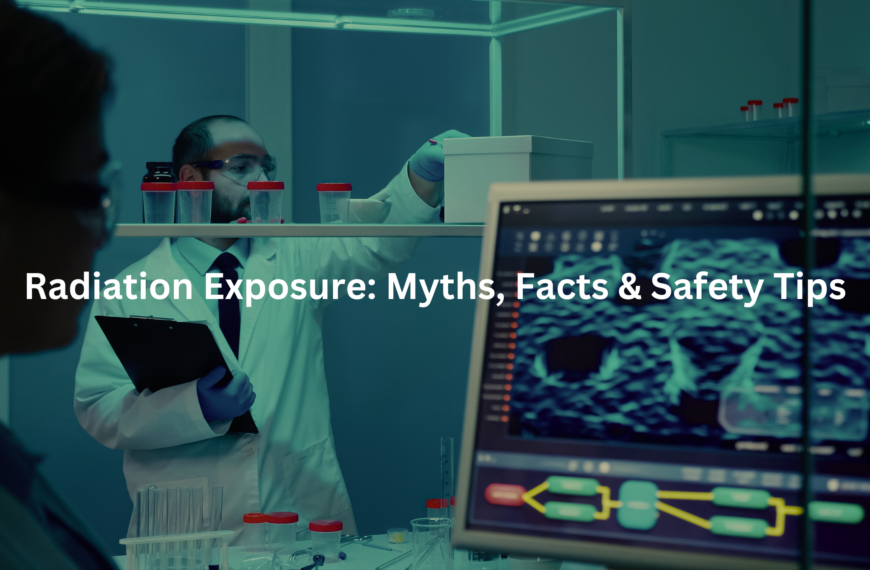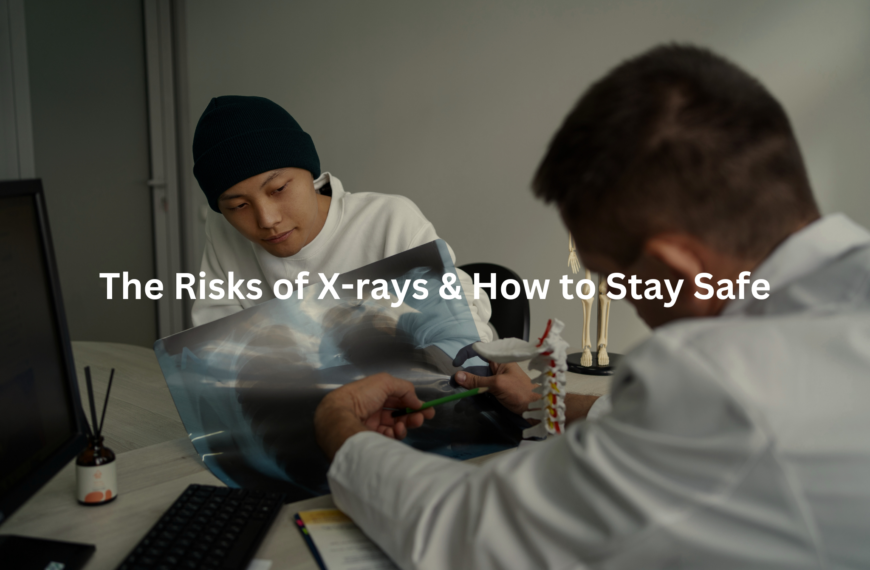The ALARA principle keeps patients and healthcare workers safe by minimising radiation exposure in medical imaging.
The ALARA principle stands for “As Low As Reasonably Achievable.” This rule helps keep everyone safe from radiation. Radiation can be dangerous, especially if there’s too much of it. In hospitals and clinics, doctors and nurses use special techniques to make sure patients and staff are safe. They follow ALARA guidelines to protect people from unnecessary radiation exposure. Want to know how they do this? Keep reading!
Key Takeaway
- ALARA means using the least amount of radiation needed for tests.
- Keeping distance, using shields, and limiting time are key safety tips.
- Ongoing training is important to manage radiation risks.
Understanding ALARA in Radiation Safety
Radiation is invisible, but its impact is real. In a hospital, where machines hum and monitors blink, the ALARA principle isn’t just a rule—it’s a safeguard. ALARA, which stands for “As Low As Reasonably Achievable,” is about balance. Doctors, nurses, and radiology staff walk a fine line between using enough radiation to diagnose a problem and ensuring they don’t use more than necessary.
In Australia, hospitals don’t have a choice; they must follow ALARA by law. The goal is simple: protect patients, staff, and anyone nearby from unnecessary exposure. (1)
Time Management in Radiology
Radiation exposure increases with time. The longer a person stays near an active radiation source, the more they absorb. That’s why radiologists and technicians work fast. They don’t rush, but they don’t linger either.
Consider fluoroscopy, a type of X-ray that provides real-time imaging. A doctor might use it to guide a needle into a joint or check blood flow through an artery. But the longer the fluoroscopy runs, the more radiation the patient and doctor receive.
So, hospitals train staff to use pulsed fluoroscopy instead of continuous mode, cutting exposure by as much as 80%. They also use image-holding techniques, capturing still frames rather than keeping the X-ray beam on the whole time.
Emergency departments face a challenge. When a patient arrives with internal bleeding, doctors don’t have the luxury of time. They might need repeated scans to track the bleeding. ALARA still applies, but in emergencies, risk tolerance shifts. It’s about making the best call in the moment.
Distance from Radiation Source
Radiation follows the inverse square law. Double the distance, and exposure drops to a quarter. Triple it, and it’s just one-ninth. That’s why distance is a radiologist’s best friend.
Hospitals design procedure rooms with this in mind. X-ray machines are positioned to minimize unnecessary exposure. Radiographers step back when activating a scan. Mobile lead shields offer extra protection when stepping away isn’t possible.
In interventional radiology, doctors use long-handled tools to increase their distance from the source. Instead of standing right next to the X-ray beam, they operate from a safer position while watching a monitor. Every extra centimetre counts.
Shielding Materials
Shielding stops radiation before it reaches the body. In hospitals, lead is the go-to material. It’s dense, absorbs radiation effectively, and lasts decades.
- Lead aprons – Worn by staff and sometimes patients, reducing radiation exposure by up to 95%.
- Lead gloves – Used during procedures where hands are near the beam.
- Lead glass screens – Found in control rooms, allowing staff to observe safely.
- Lead-lined walls – Built into imaging rooms, preventing radiation from leaking into adjacent areas.
But shielding isn’t just about lead. Some hospitals now use lightweight alternatives like tungsten or barium-plastic composites. They’re thinner, more flexible, and just as effective.
ALARA Compliance and Regulatory Framework
Credit: General Radiology
Australia doesn’t take radiation safety lightly. The Australian Radiation Protection and Nuclear Safety Agency (ARPANSA) enforces strict rules. Hospitals must follow the Radiation Protection Series guidelines, which set exposure limits and best practices.
Compliance isn’t optional. Hospitals must:
- Calibrate machines regularly – Ensuring radiation doses remain within safe limits.
- Train staff continuously – Updating techniques and reinforcing safety measures.
- Monitor exposure levels – Using dosimeters to track radiation absorbed by workers.
Regulators conduct audits. If a hospital fails, consequences range from fines to losing accreditation.
Radiation Monitoring and Personal Protective Equipment (PPE)
Hospitals track radiation exposure using dosimeters—small badges that measure cumulative dose. Workers wear them on their chest, fingers, or even inside lead aprons to check for leakage.
PPE plays a key role in ALARA. In high-exposure areas, staff wear:
- Lead aprons – Standard protection during X-rays.
- Thyroid shields – Covering the neck, where radiation-sensitive tissue is located.
- Lead glasses – Protecting the eyes from scatter radiation.
New materials are making PPE lighter. Traditional lead aprons weigh 5–7 kg, but newer designs use lead-alternative composites that are 30% lighter without sacrificing protection. (2)
Optimizing Radiation Exposure
Every test involving radiation must be justified. Doctors weigh risks and benefits before ordering a scan. This is called the justification principle. If a test won’t change the patient’s treatment, it’s not worth the radiation dose.
Once justified, exposure is optimized. Adjustments include:
- Lowering the dose for smaller patients – A child requires less radiation than an adult.
- Using automatic exposure controls – Machines adjust settings in real-time.
- Replacing older equipment – Newer machines often require lower doses for the same image quality.
Continuous Education on Radiation Safety
Training never stops. Hospitals run yearly refresher courses to keep staff sharp. Topics include:
- New shielding techniques
- Advances in imaging technology
- Interpreting dosimeter readings
Some hospitals use simulation labs, where staff practice procedures using virtual fluoroscopy systems. These setups mimic real-world scenarios without actual radiation exposure.
Pediatric Considerations in Imaging
Children absorb more radiation per kilogram than adults. Their developing tissues are more sensitive. That’s why ALARA is especially critical in paediatrics.
Guidelines recommend:
- Using ultrasound or MRI when possible – No radiation involved.
- Minimizing CT scans – Only when absolutely necessary.
- Adjusting doses – Tailoring exposure to the child’s size.
Paediatric dental X-rays follow similar rules. Digital sensors reduce dose by up to 80% compared to older film-based methods.
Challenges and Future Directions
ALARA works, but it’s not perfect. Some challenges persist:
- Emergency situations – Sometimes, speed takes priority over minimizing exposure.
- Rural hospitals – Limited resources make ALARA compliance harder.
- Patient movement – Blurry images require repeat scans, increasing dose.
Technology might help. AI-powered imaging systems are emerging, automatically adjusting radiation levels based on patient anatomy. These could cut doses by 30–50% without losing image quality. (3)
In the meantime, radiologists, technologists, and hospital administrators continue refining techniques. The goal remains the same: maximum diagnostic benefit with minimum radiation risk.
FAQ
What is the ALARA principle in radiation safety?
The ALARA principle means keeping radiation exposure as low as possible while still getting useful medical images. It follows ALARA guidelines by using shielding materials, distance from radiation source, and time management in radiology to protect patients and staff. Hospitals ensure ALARA compliance through radiation monitoring and training programs.
How do ALARA guidelines help with radiation protection in medical imaging?
ALARA guidelines help limit radiation dose limits while keeping images clear. Strategies include dose optimization, patient shielding techniques, and radiation dose reduction techniques. Hospitals use radiation monitoring and staff training on ALARA principles to maintain safety.
What are the main strategies for ALARA compliance in radiology?
Key methods include lead shielding, personal protective equipment (PPE), and reducing occupational radiation exposure limits. Hospitals follow radiation safety audits and continuous education on radiation safety to meet regulatory compliance in radiology.
How does ALARA address internal and external radiation exposure?
External radiation exposure is managed through lead shielding and mobile lead shields, while internal radiation hazards require contamination control and hygiene practices in radiology. Hospitals use fume hoods in laboratories and safe handling of radioactive materials to minimise risks.
Why is dose optimization important in radiology?
Dose optimization ensures the lowest necessary exposure while maintaining image quality. The justification principle prevents unnecessary scans, and the optimization principle keeps doses minimal. Pediatric considerations in imaging are especially important for safety.
How do radiology staff stay trained on ALARA principles?
Staff training on ALARA principles includes continuous education on radiation safety, radiation safety audits, and clinical audit of radiation practices. Hospitals use radiological incident reporting to improve safety and maintain regulatory compliance in radiology.
What role does shielding play in radiation safety?
Shielding materials like lead shielding and mobile lead shields reduce ionizing radiation exposure. Lead aprons for protection are used in medical imaging safety, while hospital walls may include protective materials.
How do hospitals manage radioactive waste safely?
Radioactive waste management practices involve contamination control, spill containment measures, and safe disposal. Radiation safety audits ensure compliance with national standards and reduce the environmental impact of radiation use.
What are emergency radiation protocols in healthcare settings?
Emergency radiation protocols include spill containment measures, radiological incident reporting, and safe handling of radioactive materials. Hospitals train staff in hygiene practices in radiology to limit exposure risks.
Conclusion
In wrapping up, the ALARA principle is a vital part of keeping people safe from radiation in Australia. It means using the least amount of radiation needed while still getting the job done. Hospitals follow strict rules, use clever techniques, and keep learning to protect everyone involved. With new technologies and ongoing training, the future of radiation safety looks promising for both patients and healthcare workers.
References
- https://www.idexx.com/files/radiation-safety-alara-principles.pdf
- https://www.cdc.gov/radiation-health/safety/alara.html
- https://pubmed.ncbi.nlm.nih.gov/18188044/



